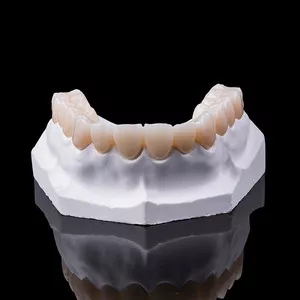An Insight into the Variations of Dental Crowns,When it comes to dental crowns,two popular options are cast crowns and hammered crowns.Both are widely used in dentistry for various purposes.However,it is essential to understand the distinctions between these two types of dental crowns to make an informed decision.This article will explore the key differences between cast and hammered crowns,enabling you to gain a comprehensive understanding of each.
1.Manufacturing Process
One of the primary differences between cast and hammered crowns lies in their manufacturing processes.
Cast Crowns:Cast crowns are made using the lost-wax technique.In this process,an impression of the tooth is taken,and a wax pattern is created from it.The wax pattern is then invested in a mold and heated,causing the wax to melt and leave an empty mold.Molten metal,such as gold or zirconia,is then poured into the mold to create the final cast crown.
Hammered Crowns:Hammered crowns,also known as"hand-forged"crowns,involve a labor-intensive process.Instead of using a wax pattern,a solid block of metal is hand-shaped using special tools.The metal block is hammered and shaped to mimic the natural tooth structure,resulting in a crown with a unique texture and irregularities.
2.Aesthetics and Appearance
The aesthetic differences between cast and hammered crowns are worth considering.
Cast Crowns:Cast crowns offer excellent aesthetics,especially when made from materials such as porcelain.Porcelain cast crowns can be color-matched to blend seamlessly with neighboring teeth,providing a natural-looking appearance.However,the casting process may result in a smoother surface texture compared to hammered crowns.
Hammered Crowns:Hammered crowns possess a distinct and artistic appearance.The hand-forged nature of these crowns creates a textured surface,mimicking the irregularities found in natural teeth.This unique texture can be desirable for individuals who prefer a more rustic or antique look.
3.Strength and Durability
Both cast and hammered crowns have their respective strengths when it comes to durability.
Cast Crowns:Cast crowns are known for their excellent tensile strength,making them highly durable and suitable for withstanding biting forces.They are less likely to fracture or chip compared to hammered crowns.Cast crowns,particularly those made from gold,exhibit exceptional longevity.
Hammered Crowns:Hammered crowns,on the other hand,may have slightly lower tensile strength compared to cast crowns due to the hand-forging process.However,they can still provide sufficient durability for regular chewing and biting activities.It is important to note that the longevity of hammered crowns may vary based on the metal used and the individual's oral hygiene habits.
Summary
In summary,the differences between cast and hammered crowns lie in their manufacturing processes,aesthetics,and durability.Cast crowns are fabricated using the lost-wax technique and offer excellent aesthetics and longevity.On the other hand,hammered crowns are hand-forged,providing a unique textured appearance.While they may have slightly lower tensile strength compared to cast crowns,they still offer sufficient durability.For individuals seeking a natural-looking crown,cast crowns may be the preferred choice,whereas those desiring a more artistic or rustic appearance may opt for hammered crowns.





